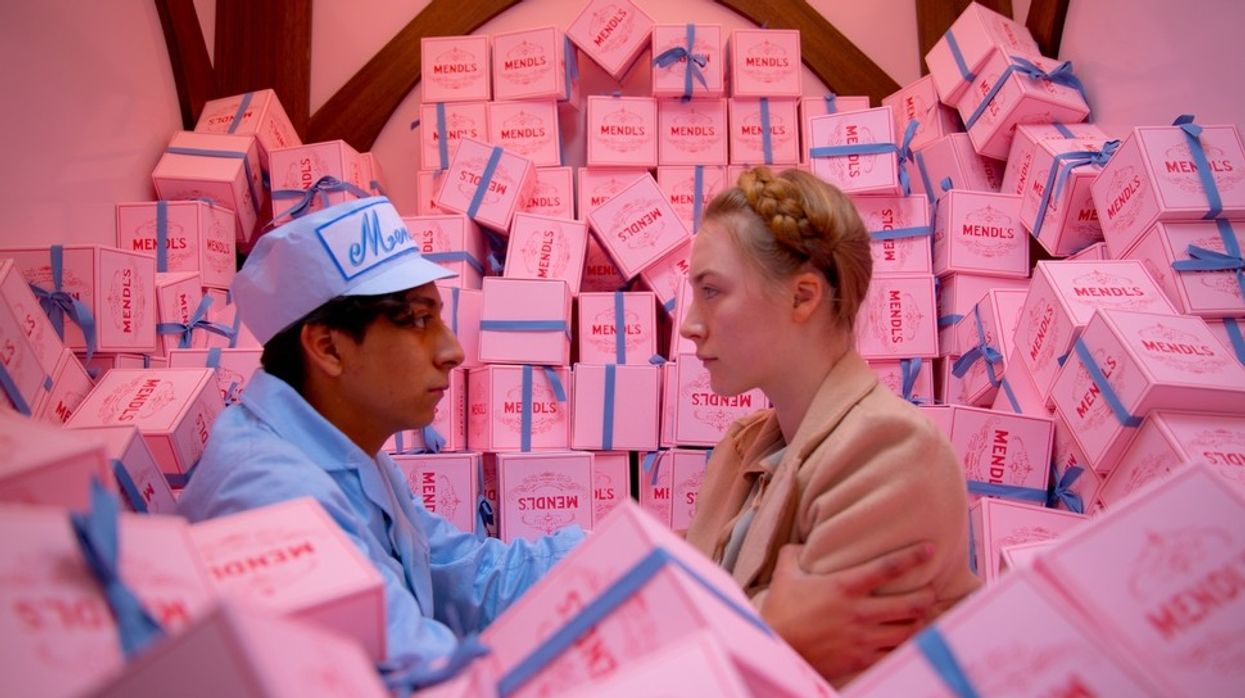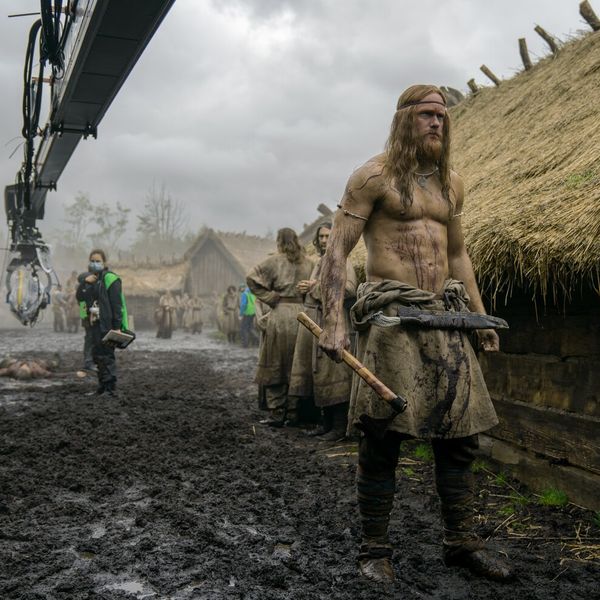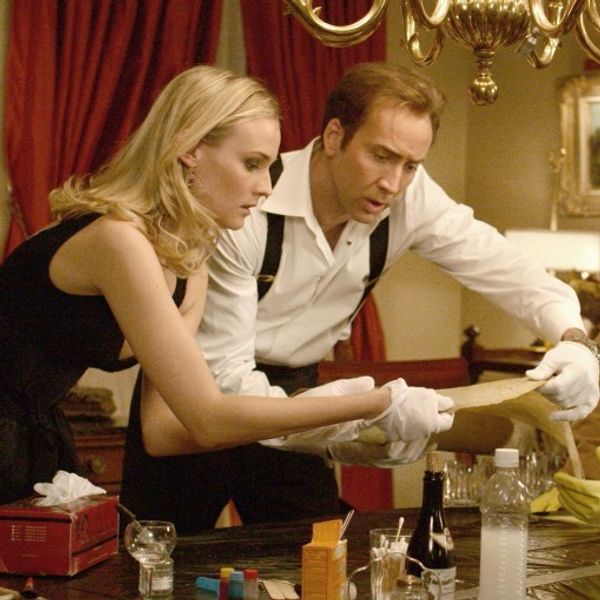What is Mise en Scene? (Definition and Examples)
What is mise en scene and why is it important to filmmaking?

'Grand Budapest Hotel'
In the world of cinema and theater, where stories are brought to life through a delicate dance of visuals, emotions, and narratives, there exists an often unspoken but profoundly influential artistic concept known as "mise en scène."
This French term, which translates to "placing on stage," combines set design, costumes, lighting, color, composition, actor movements, and props that weaves the tapestry of a visual story, immersing the audience in a world of imagination and emotion.
Today, we're going to do a deep dive into the topic and show you how to maximize your mise en scene efforts.
Let's dive in.
Mise-en-scène - An essential filmmaking conceptwww.youtube.com
Mise En Scene Definitions

'Hamlet'
Columbia
Mise en scène is a French term that literally translates to "placing on stage" or "putting in the scene." It is a concept widely used in film and theater to refer to the arrangement of visual elements within a frame or on a stage.
What Are The Elements of Mise En Scene?
Mise en scène is a critical tool in storytelling as it helps convey information, establish the mood, and immerse the audience in the world of the film or play.
Directors and designers use mise en scène to make deliberate choices that enhance the narrative and visual impact of a production.
Let's dig deeper.
- Set Design: The physical environment where the action takes place. This includes the choice of location, props, and the arrangement of objects within the scene. For example, in a Western film, the set design might include a dusty, run-down saloon with swinging doors and a bar.
- Costumes and Makeup: The clothing and makeup worn by the characters. These choices can convey a character's personality, social status, and the time period in which the story is set. For instance, a character in a period drama might wear elaborate, historically accurate costumes.
- Lighting: How light is used to illuminate the scene and the characters within it. Lighting can create mood, emphasize certain elements, or obscure others. In a horror film, for example, low-key lighting with shadows can create a sense of suspense and fear.
- Color: The use of color in a scene can evoke emotions and convey information. Warm colors like reds and yellows can create a cozy or passionate atmosphere, while cool colors like blues and greens can suggest calmness or melancholy.
- Composition: The arrangement of elements within the frame or on the stage. This includes the placement of characters, objects, and the use of angles and framing techniques. A director might choose to use a wide shot to show the vastness of a landscape or a close-up to capture a character's emotions.
- Actor's Movements and Blocking: The way actors move within the scene and interact with each other and their environment. This includes their positioning, gestures, and facial expressions. For example, in a dance scene, the choreography and blocking of actors are crucial aspects of mise en scène.
- Props and Set Dressing: The objects within the scene that characters interact with or that contribute to the overall atmosphere. In a detective film, a magnifying glass and a dimly lit office with old newspapers strewn about can be important props and set dressing elements.
Why should you know about, or even think about mise en scene?
Because it'll make you a complete filmmaker. This is one of those things that doesn't require you to spend money. It just requires you to think holistically about your creative process, and the end result.
Admittedly, it can feel like a convoluted and overly-complicated concept to understand, but it's necessary to look at what your camera is capturing from a wider perspective. In other words, it's a concept that helps you look at the shot as a whole, not just with the cinematographic elements (lighting, camera angle, etc.), character elements (blocking, wardrobe, etc.), or set design (props, decor, etc.) alone.
The best thing you can do with this concept is bringing awareness to each element you put on the screen, and how it affects the end result.
Before we get to the big infographic from ShoHawk, let's break things down into smaller pieces and provide some resources focusing on those.
The Elements of Mise En Scene
 'Citizen Kane'
'Citizen Kane'Warner Bros.
Mise-en-scène refers to all the elements placed before the camera to be photographed: the settings and props, lighting, costumes and makeup, and figure behavior.
These elements work together to convey a film's narrative, themes, and character development without relying solely on dialogue or plot.
From the deliberate choice of color palettes to the subtle nuances of actors' gestures, we will uncover how directors and cinematographers craft detailed and immersive environments.
By examining classic and contemporary examples, this exploration aims to enrich the reader's appreciation for the art of filmmaking and enhance their ability to critically engage with visual media.
So let's dig deeper into that.
Camera Shots
One of the biggest and most obvious elements are the shots themselves. This complete guide on 50+ camera angles, shots, and movements is a perfect place to start.
Color Theory
Mastering a film color palette can make you a better filmmaker. It's just that simple. When it comes to mise en scene, choices about color will inform every aspect of the process. From lighting to art department to VFX.
Here is a taste of the bigger picture just to get you thinking about how your choices change an audience's experience on an emotional and psychological level.
Lighting
There are at least 13 film lighting techniques every filmmaker should know.
Use this infographic and our other tools in that link to help you get a sense of the keys to lighting.
Production Design
One more department that directly affects the mise en scene is art. A production designer will make sure everything in the frame matches the goals of the director and the project. Good versions of this mean being on the same page and using this to tell the story.
Sometimes we get into the trap of thinking that great production design means lavish wardrobe, costume made props, and large scale builds. This is not necessarily the case.
The DIY approach is increasingly effective. But don't forget that even on some of the largest projects with money to spend there will be tough limitations that necessitate creative approaches.
The imagine below comes from an infographic created by Michael and Christopher of ShoHawk that details 15 of its most important concepts.
To learn more about mise-en-scene, be sure to check out ShoHawk's blog post here.
How the Elements Work Together

"Mise en scène" is more than just a technical term; it is the art of storytelling through the lens of aesthetics. Each element meticulously chosen, each visual detail deliberately arranged, serves a purpose beyond the surface.
It is the tool that directors and designers employ to evoke feelings, convey messages, and transport viewers to different times, places, and emotional landscapes.
All the elements of mise en scène work together harmoniously to create a cohesive and immersive visual storytelling experience.
When these mise en scène elements work in harmony, they amplify the impact of a scene or an entire production. For example:
- In a classic film noir, the combination of low-key lighting, stark shadows, and urban set design creates an atmosphere of mystery and danger. Characters clad in trench coats and fedora hats further emphasize the genre's signature style.
- In a period drama, elaborate costumes and meticulously recreated historical sets transport viewers to a different time and place. The attention to detail in both set design and costume helps immerse the audience in the era being depicted.
- In a romantic comedy, bright and cheerful colors, along with well-choreographed actor movements, enhance the lighthearted and joyful atmosphere. The use of props like flowers or handwritten notes can add to the romantic charm.
In essence, mise en scène elements collaborate to support and enhance the narrative, to convey emotions and information, and to create a visual language that deepens the viewer's engagement with the story and its characters. When executed effectively, this collaboration can elevate a film or theater production to a work of art.
Mise en scène is not merely a concept; it is the poetry of visual storytelling, an art form that enriches our lives and transports us to realms of wonder.
So, the next time you find yourself captivated by a film's visual beauty or moved by the staging of a play, remember that it is the magic of mise en scène that makes it all possible—a testament to the boundless creativity and ingenuity of the human spirit in the world of entertainment.
Let me know what you think in the comments.
- The Mise En Scène of Wes Anderson, a Video Essay Examining the Director's Quirky Style ›
- Watch: Wes Anderson Teaches Mise-en-Scene with 'Moonrise Kingdom' ›
- What is Mise en Scene? (Definitions and Examples) ›











